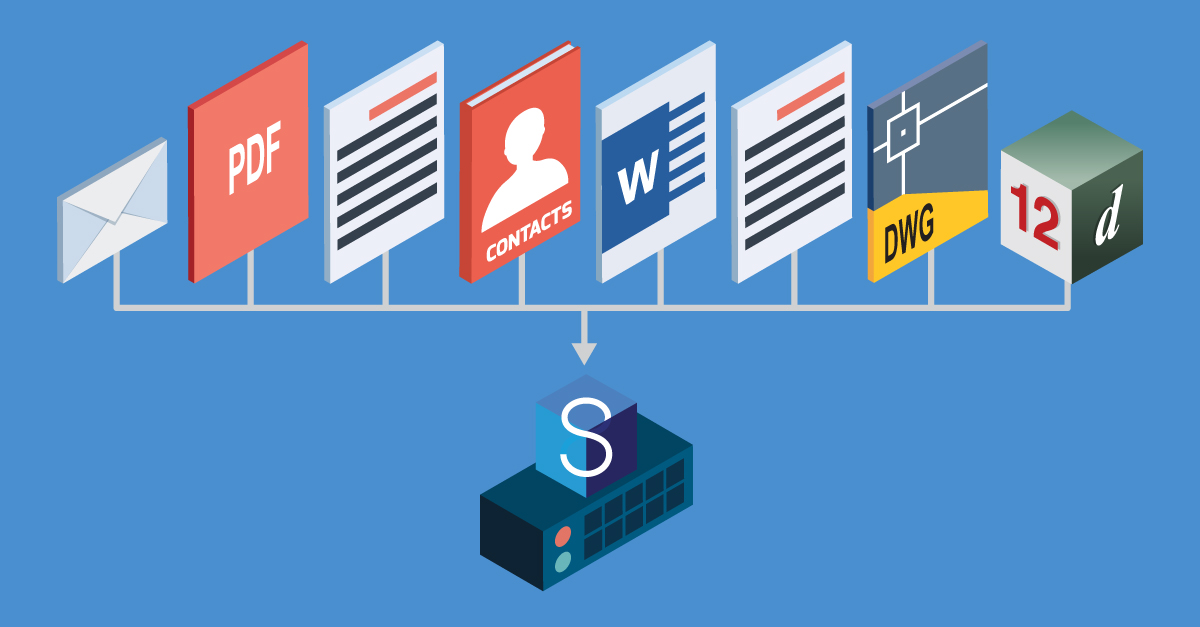Why Your Council Needs a CDE (Common Data Environment)

Over the past 3 years there has been a dramatic adoption of the Common Data Environment (CDE) by councils across Australia. Digital transformation of the workplace, spurred on by a global pandemic, challenged the way we looked at our workplaces. Project Information Management (PIM) systems within engineering departments were forced to make a dramatic shift in a short time.
It has long been broadly understood in the industry that Records Management (RM) systems and Asset Management [AM] systems were not the containers for active project information. While Asset Managers, GIS, and other teams in council went about their digital transformations prior to the pandemic, designers, drafters, surveyors, and their related colleagues were left to continue working on the old office file server. So when the call came for everyone to work from home, what did these crucial arms of our engineering teams do to keep the engine running? And what does it mean for the industry moving forward?
Why your current systems could be better
From an IT perspective, one of the greatest challenges in a local government office is managing the data of the engineering and project teams. This information, especially in production, creates headaches for all involved. Providing a system that can cope with the size and complexity of information involved, whilst complying with records management legislation has often been put in the too-hard basket.
Design and drainage models can be gigabytes in size, including complex folders of files, and drawings containing references to other drawings and files. This can be compounded by a team’s request to improve their ability to collaborate with internal and external stakeholders, comply with data sovereignty regulations, and industry compliance to manage revisions and versions of items such as CAD files. It is readily apparent that current systems of Records Management, Asset Management and even internal file systems, aren’t going to meet the needs of a modern project delivery team.
Summary: The datasets that project delivery teams are working on are simply too large, too complex and too important to risk by relying on outdated or poor-fit solutions. We have long identified record management platforms as a poor fit to support the needs of project delivery. As a result, we have relied on basic file management, but this doesn’t address the current needs of modern teams working in project delivery. This is where the Common Data Environment has been deployed.
What is a CDE?
A Common Data Environment is a single platform or a group of integrated IT solutions, which provides a centralised repository for the collection, management and dissemination of project and asset information through a managed process. This combined process is called project information management and asset information management.
An explanation of that for those working in local government project delivery is:
A central repository for project information management. Active projects, where data sets, model data, geospatial information and the related documentation can be created, edited, collaborated on, and managed. This includes management of revisions, versions, references, complex data sets, large data, correspondence and transmittals.
Why the Common Data Environment Works
The CDE was born to resolve project information specific issues. It was designed to suit the challenges of project delivery teams, project management, design and construction within the modern world of hybrid working, remote collaboration and ISO 19650 compliance.
12d Synergy has been a leader in this space, helping councils around Australia develop a platform to enable compliance, quality, and collaboration.
12d Synergy is a central point of truth for your project information. Naming conventions are applied across project files, and all versions, and revisions of information are automatically captured at check-in, removing risk of duplication.
This ensures that your team has the right access to the right information when they need it.
12d Synergy is the only CDE solution that provides support for the 12d Model, as well as other complex datasets like XPSWMM, Tuflow, Trimble Business Centre etc. Not only are these packages supported, but efficiencies can be seen through intelligent data transfer. By transferring the changed file within a project instead of the project data in its entirety, data transfer time is reduced, thus reducing the amount of data that project delivery teams are processing. This should benefit the whole organisation.
For drafting processes, 12d Synergy offers enhanced reference management, by providing a rock-solid Quality Assurance (QA) process of capturing versions and revisions. Efficiencies can be gained through the CAD integrations in management of title blocks, layout attributes and publishing.
Conclusion
The penny has dropped across Australia. Local governments are investing in digital transformation for their project delivery teams, and at the heart of this is the Common Data Environment.
Richard Clark (Senior Civil Project Officer, City of Newcastle) summarised this shift best during the 2021 12d Tech Forum when he said, “Just as XTree revolutionised file management in MS DOS, 12d Synergy is revolutionising data management in the era of remote working. 12d Synergy is simply the next step along our evolutionary path in data management. It’s not a matter of if, but when, to take that step. Just don’t let yourself fall 20 years behind again.”
We welcome your thoughts and feedback. Get in touch with the author on info@12dsynergy.com.
Join us for our webinar…
Rapid Digital Transformation with 12d Synergy: City of Newcastle’s Story
Presented by Richard Clarke
Available on demand

